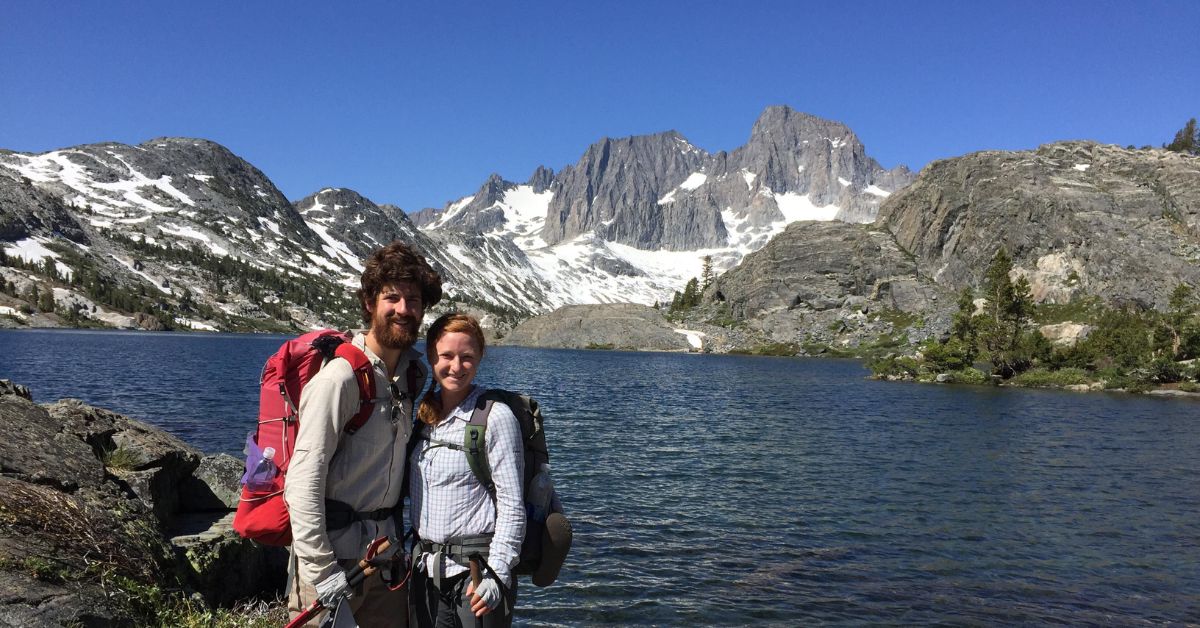Imagine spending months in the wilderness, walking from sunrise to sunset, pushing your body and mind to their limits. This is the reality for those who attempt to hike the entire Appalachian Trail. But just how long does this epic journey take?
The Appalachian Trail, stretching 2,190 miles from Georgia to Maine, is a test of endurance, willpower, and determination. For most thru-hikers, completing the trail takes between 5 and 7 months. However, this timeline can vary greatly depending on numerous factors.
From physical fitness and hiking experience to weather conditions and personal goals, many elements influence the duration of an AT thru-hike. Whether you dream of conquering this iconic trail or are simply curious about its challenge, understanding the time commitment is crucial for anyone considering this incredible adventure.
Now, let’s dive into the details of hiking the Appalachian Trail, exploring the factors that affect hiking duration and providing insights to help you plan your journey.
A Few Basic Appalachian Trail and Thru-Hiker Facts
The Appalachian Trail is an iconic long-distance hiking trail in the eastern United States. It’s known for its challenging terrain, beautiful scenery, and sense of community among hikers. Before we dive into the details of how long it takes to hike the AT, let’s cover some basic facts about the trail and thru-hiking.
Understanding these fundamental aspects of the Appalachian Trail will help you grasp the scope of the challenge ahead. From the trail’s length to the states it passes through, this information sets the stage for your thru-hiking journey.
What is the Appalachian Trail?

The Appalachian Trail is a marked hiking trail from Springer Mountain in Georgia to Mount Katahdin in Maine. It was completed in 1937 and maintained by 31 trail clubs and multiple partnerships. The AT is famous for its natural beauty, diverse ecosystems, and the physical and mental challenges it presents to hikers.
How many miles is the Appalachian Trail?
The Appalachian Trail is approximately 2,190 miles long. However, the exact length can vary slightly from year to year due to trail maintenance, reroutes, and improvements. Hikers should be prepared for the possibility of a few extra miles during their journey.
Also read this: Essential Hiking Gear: What to Wear for Every Adventure
Where does the Appalachian Trail start and end?
The southern terminus of the Appalachian Trail is located on Springer Mountain in Georgia. The northern terminus is at the summit of Mount Katahdin in Maine. Most thru-hikers begin their journey in Georgia and end in Maine, but some choose to hike in the opposite direction.
Which states does the Appalachian Trail pass through?
The Appalachian Trail passes through 14 states:
- Georgia
- North Carolina
- Tennessee
- Virginia
- West Virginia
- Maryland
- Pennsylvania
- New Jersey
- New York
- Connecticut
- Massachusetts
- Vermont
- New Hampshire
- Maine
Each state offers unique landscapes, challenges, and experiences for hikers.
What is the definition of an Appalachian Trail (AT) Thru-Hike?
An Appalachian Trail thru-hike is defined as completing the entire trail in one continuous journey within a single year. Thru-hikers typically start at one end of the trail and finish at the other, although some may choose alternative routes or “flip-flop” hikes.
What is the difference between an AT Thru-Hiker and a 2000 Miler?
An AT thru-hiker completes the entire trail in one continuous journey within a year. A 2000-miler, on the other hand, is someone who has hiked the entire trail but not necessarily in one continuous trip. 2000 miles may complete the trail over multiple years through section hiking.
How Do I Accomplish an AT Thru-Hike?

Accomplishing an AT thru-hike requires careful planning, physical preparation, and mental fortitude. It’s a significant undertaking that demands dedication and perseverance. Many aspiring thru-hikers spend months or even years preparing for their journey.
To complete a thru-hike, you’ll need to consider factors such as gear selection, resupply strategy, and physical conditioning. It’s also crucial to develop a realistic timeline and budget for your hike.
Planning Your Thru-Hike
Start by researching extensively about the trail and experiences of past thru-hikers. Join online communities, read books, and attend workshops if possible. Create a detailed plan that includes your start date, estimated completion time, and resupply points.
Physical Preparation

Begin a training regimen several months before your hike. Focus on cardio exercises, strength training, and long-distance hiking with a loaded pack. Gradually increase your hiking distances and elevation gains to prepare for the demands of the trail.
Also read this: Savoring Europe: A Culinary Journey with Intrepidfood.eu
Gear Selection
Choose lightweight, durable gear suitable for long-distance hiking. Test your equipment before the hike to ensure comfort and functionality. Remember, you’ll be carrying everything on your back for months, so every ounce counts.
Mental Preparation
Mentally prepare for the challenges of living on the trail for months. Develop strategies to stay motivated during difficult times. Consider keeping a journal or sharing your journey with others to maintain a positive mindset.
How Long Does Thru-Hiking the Appalachian Trail Take from Start to Finish?
The duration of an Appalachian Trail thru-hike can vary significantly from person to person. On average, most hikers complete the trail in 5 to 7 months. However, some experienced and highly motivated hikers have finished in as little as 3 months, while others may take up to 8 months or longer.
It’s important to remember that the journey is not just about reaching the end as quickly as possible. Many hikers find that the experiences and personal growth along the way are just as valuable as completing the trail itself.
Average Thru-Hike Duration

Most thru-hikers complete the Appalachian Trail in 5 to 7 months. This allows for a steady pace with occasional rest days and time to enjoy the trail experience.
Fastest Known Times
While not recommended for most hikers, some ultrarunners have completed the AT in an incredibly short time. The current self-supported speed record is just over 41 days, set by Joe “Stringbean” McConaughy in 2017.
Factors Affecting Hike Duration
Several factors can influence how long it takes to complete the AT:
- Hiking pace and daily mileage
- Number of rest days or “zero days”
- Weather conditions
- Physical fitness and experience
- Trail conditions and terrain difficulty
Setting Realistic Expectations
It’s crucial to set realistic expectations for your hike. While it’s admirable to have goals, being too rigid with your timeline can lead to burnout or injury. Allow for flexibility and remember to enjoy the journey.
Understanding the Factors that Affect Hiking Duration on the AT Before Starting Your Thru-Hike
Before embarking on your Appalachian Trail thru-hike, it’s essential to understand the various factors that can influence your hiking duration. These factors range from your fitness level to external conditions like weather and trail difficulty. By considering these elements, you can better prepare for your journey and set realistic expectations.
Awareness of these factors will help you plan more effectively and adapt to challenges as they arise during your hike. Let’s explore some of the key considerations that can impact how long it takes to complete the Appalachian Trail.
Hiking Strategies and Pace
Your hiking strategy and daily pace play a crucial role in determining the overall duration of your 10–15 hike. Consider the following aspects:
How Many Miles a Day Do I Need to Average to Thru-Hike the Appalachian Trail?

To complete the AT within 5-7 months, most hikers aim to average 10–15 miles per day. However, this can vary greatly depending on terrain and individual capabilities. Many hikers start with lower daily mileage and gradually increase as they build strength and endurance.
How many hours a day should you hike on the Appalachian Trail?
Most thru-hikers spend 8–12 hours a day on the trail. This includes time for breaks, meals, and setting up/breaking down camp. The actual hiking time can range from 6 to 10 hours, depending on pace and trail conditions.
Is there a time limit for finishing the Appalachian Trail? to
There is no official time limit for completing the Appalachian Trail. However, to be considered a thru-hiker, you must complete the entire trail within 12 months. Many hikers aim to finish before winter weather sets in at higher elevations.
How Do I Create a Schedule for Thru-Hiking the Appalachian Trail?
Create a flexible schedule that accounts for:
- Daily mileage goals
- Resupply points
- Potential rest days
- Seasonal weather patterns
- Challenging trail sections
Remember to build in buffer days for unexpected events or slower progress.
Physical Fitness Preparation

Your physical condition at the start of your hike can significantly impact your pace and overall duration. Consider these aspects of physical preparation:
How much prior backpacking experience do I need to hike the Appalachian Trail?
While prior backpacking experience is beneficial, it’s not necessary. However, the more experience you have, the better prepared you’ll be for the challenges of a hike. If you’re new to backpacking, try to gain some experience with overnight and multi-day trips before starting your AT journey.
How to Prepare Your Body for Thru-Hiking the Appalachian Trail
Start a training regimen at least 3–6 months before your hike.
- Engage in regular cardio exercises like running, cycling, or swimming
- Practice hiking with a loaded backpack
- Gradually increase your hiking distances and elevation gains
- Focus on building leg strength and endurance
Start Strength Training Before Your Thru-Hike
Incorporate strength training into your preparation.
- Focus on exercises that target your legs, core, and back
- Include exercises like squats, lunges, deadlifts, and planks
- Gradually increase weights and repetitions
- Don’t neglect upper body strength, as it’s crucial for carrying a backpack
Seasons & Deciding When and Where to Start—AT Thru-Hiker Hiking Directions & Start Dates
The timing of your thru-hike can significantly impact your experience and the time it takes to complete the trail. Consider these factors when planning your start date and direction:
When Should I Start My Appalachian Trail Through-Hike?
The ideal start time depends on your chosen direction and personal preferences. Consider the following:
Are you attached to starting or ending in a specific spot?
If you have a strong preference for starting or ending at a particular terminus, this will influence your start date and direction.
Are there seasons you prefer to hike in?

Consider which seasons you’d like to experience on the trail. This can help determine your start date and direction.
Is There a Best Direction to Hike the Appalachian Trail?
There are three main options for hiking the AT:
NOBO (Northbound)
Most thru-hikers choose to hike northbound, starting in Georgia and ending in Maine.
When Should Northbounders Start Thru-Hiking the AT, and What Are the Best Starting Dates for Northbounders?
Northbound hikers typically start between March and April. Early March may encounter winter conditions, while late April starts to risk crowded trails and potential summer heat in the southern states.
SOBO (Southbound)
Southbound hikers start in Maine and end in Georgia.
When Should Southbounders Start Through-Hiking the AT, and What Are the Best Starting Dates for Southbounders?
Southbound hikers usually start in June or early July, after the snow melts on Mount Katahdin. This allows them to reach the southern states before winter.
Flip-Flop: Hiking the Appalachian Trail

Flip-flop hikes involve starting at a midpoint, hiking to one terminus, and then returning to the midpoint to hike in the other direction.
West Virginia/Mid-Trail to Maine, then West Virginia/Mid-Trail to Georgia
This option allows hikers to avoid crowded starting areas and extreme weather conditions.
The Best Starting Dates for West Virginia to Maine, then West Virginia to Georgia Flip-Floppers:
Mid-April to early May is ideal for this flip-flop route.
Georgia to West Virginia/Mid-Trail, then Maine to West Virginia/Mid-Trail
This option lets hikers start in Georgia during peak season but avoid the crowds in New England.
The Best Starting Dates for Georgia to West Virginia, then Maine to West Virginia Flip-Floppers:
March to early April for the first leg, then late June to early July for the second leg.
What is Section Hiking the Appalachian Trail?
Section hiking involves completing the AT in segments over an extended period rather than in one continuous thru-hike. This option allows for greater flexibility but may take several years to complete the entire trial.
Gear
Proper gear selection can significantly impact your hiking speed and comfort. Consider these aspects:
What is the best Appalachian trail map?
While there are various maps available, many hikers prefer:
- The A.T. Guide by David “AWOL” Miller
- Gut Hook’s Appalachian Trail Guide app
- Official Appalachian Trail Conservancy maps
Choose a map or guide that suits your preferences and needs.
Understanding the Factors That Affect Hiking Duration on the AT During Your Thru-Hike
Once you’re on the trail, several factors can influence your hiking speed and overall duration. Being aware of these elements can help you adapt your plans and expectations as you progress. It’s important to remain flexible and adjust your strategy based on the conditions you encounter.
Remember that every hiker’s experience is unique, and it’s okay if your journey takes longer or shorter than you initially planned. The key is to stay safe, enjoy the experience, and make the most of your time on the Appalachian Trail.
Weather Conditions
Weather can significantly impact your hiking speed and the number of miles you can cover each day. Consider these weather-related factors:
- Rain and storms may slow your pace and require more frequent breaks
- Extreme heat can lead to fatigue and the need for additional water.
- Cold weather might necessitate carrying extra gear, adding weight to your pack
- Snow and ice in higher elevations can make trail conditions treacherous
Be prepared to adjust your daily mileage goals based on weather conditions. Always prioritize safety over sticking to a rigid schedule.
Terrain, Condition of Trail and Elevation
The Appalachian Trail features varied terrain that can affect your hiking speed, injuries,
- Steep ascents and descents may slow your pace
- Rocky sections require careful foot placement and can be time-consuming
- Well-maintained trail sections allow for faster hiking
- High-elevation areas may cause altitude-related fatigue
Be prepared for your pace to vary depending on the terrain you’re traversing. Some states, like Virginia, have relatively easy terrain, while others, like New Hampshire and Maine, are known for their challenging landscapes.
Injuries
Injuries can significantly impact your hiking duration.
- Minor injuries, like blisters or muscle strains, may slow your pace
- More severe injuries might require time off the trail for recovery
- Chronic issues like tendinitis can affect your long-term hiking speed
To minimize injury risk:
- Break in your shoes before starting the hike
- Use trekking poles to reduce strain on your knees and ankles
- Listen to your body and rest when needed
- Stretch regularly and maintain proper hiking form
Zero Days
“Zero days” are rest days where you hike zero miles. These are crucial for:
- Physical recovery
- Mental rejuvenation
- Resupplying food and gear
- Doing laundry and personal maintenance
While zero days are important, too many can significantly extend your hike duration. Aim for a balance between rest and progress.
Resupplies
Efficient resupply strategies can save time during your hike.
- Plan your resupply points in advance
- Consider mailing supply boxes to yourself at key locations
- Learn to resupply quickly in trail towns to minimize time off the trail
- Balance the weight of your food with the frequency of resupplies
Effective resupply planning can help you maintain a steady pace and avoid unnecessary delays.
Food
Proper nutrition is crucial for maintaining your energy and hiking pace.
- Carry enough calories to fuel your daily mileage
- Choose foods with a good balance of carbohydrates, proteins, and fats
- Learn to eat efficiently on the trail to minimize stopping time
- Stay hydrated to maintain your energy levels
Experiment with different foods and eating strategies to find what works best for you.
Mental Mindset
Your mental state can significantly impact your hiking pace and overall experience.
- Maintain a positive attitude, even during challenging sections
- Set realistic daily goals to avoid burnout
- Celebrate small victories along the way
- Practice mindfulness to stay present and engaged with your surroundings
A strong mental mindset can help you push through difficult days and maintain a consistent pace.
Staying in Touch with Friends and Family
Regular communication with loved ones can provide emotional support.
- Use Trail Towns to make phone calls or send emails
- Consider carrying a satellite communication device for remote areas
- Share your experiences through social media or a blog
- Be prepared for limited connectivity in some trail sections
Balancing communication with trail time is important for maintaining your hiking rhythm.
Having A Support Person Back Home
A dedicated support person can assist with:
- Mailing resupply boxes to predetermined locations
- Providing weather updates and trail condition information
- Offering emotional support during challenging times
- Helping with any logistical issues that arise during your hike
Having reliable support can reduce stress and allow you to focus on hiking.
Find a Hiking Partner or “Tramily” Along the Appalachian Trail
Hiking with others can affect your pace and experience.
- A compatible hiking partner can provide motivation and support
- A “family” (trail family) can make the journey more enjoyable
- Group dynamics may influence your daily mileage and rest days
- Be prepared to hike your hike, even within a group
Remember that it’s okay to hike alone or change hiking partners if your paces or goals don’t align.
Appalachian Trail FAQs
As you plan your Appalachian Trail thru-hike, you may have additional questions about the experience. Understanding common concerns and misconceptions can help you better prepare for your journey. Remember that while general advice is helpful, every hiker’s experience is unique.
Here are some frequently asked questions about hiking the Appalachian Trail, along with insights to help you navigate your adventure.
Can I avoid the crowd conditions while hiking the entire AT?
Yes, there are ways to minimize exposure to crowded trail conditions:
- Consider a flip-flop hike or southbound hike instead of the popular northbound route
- Start your hike on a weekday rather than a weekend
- Begin your hike earlier or later than the peak starting times
- Be prepared to hike longer days to pass through popular areas quickly
- Explore less popular campsites and shelters
Remember that some crowding is part of the AT experience, especially in popular areas.
Do I Have to Register My Appalachian Trail Through-Hike?
While not mandatory, it’s highly recommended to register your thru-hike with the Appalachian Trail Conservancy (ATC)
- Registration helps manage the flow of hikers and reduces environmental impact
- It provides valuable data for trail management and conservation efforts
- You’ll receive important updates and information about trail conditions
- Registration is free and can be done online through the ATC website
Registering your hike demonstrates responsible trail use and helps preserve the AT for future hikers.
Will Permits Be Required on My Appalachian Trail Through-Hike?
While most of the AT doesn’t require permits, there are a few exceptions:
- Great Smoky Mountains National Park requires a permit for overnight stays
- Shenandoah National Park requires a free backcountry camping permit
- Baxter State Park (where Mount Katahdin is located) has specific regulations for thru-hikers
Research permit requirements for each section of your hike and obtain necessary permits in advance.
How Many People Have Hiked the Entire Appalachian Trail?
As of 2021, the Appalachian Trail Conservancy reports that over 20,000 people have completed the entire trail. However, this number represents only a small fraction of those who attempt a thru-hike. The completion rate for aspiring thru-hikers is estimated to be around 25%.
Keep in mind that completing the entire trail, whether through a thru-hike or section hike, is a significant accomplishment, regardless of how many others have done it.
What is the meaning behind the saying “Hike Your Hike?”
“Hike Your Hike” (HYOH) is a popular phrase in the hiking community that emphasizes:
- Each person’s journey is unique and personal
- You shouldn’t feel pressured to hike at someone else’s pace or style
- It’s okay to make decisions based on your own goals and comfort level
- Respect for others’ hiking choices and preferences
This philosophy encourages hikers to focus on their own experiences rather than comparing themselves to others.
Is hiking the Appalachian Trail worth it?
The value of hiking the Appalachian Trail is subjective and varies for each individual. However, many hikers find it to be a life-changing experience.
- It offers a profound connection with nature
- Provides opportunities for personal growth and self-discovery
- Challenges you physically and mentally
- Creates lasting friendships and a sense of community
- Offers a unique perspective on the diverse landscapes of the eastern United States
While the journey is demanding, most thru-hikers and section hikers find the experience incredibly rewarding and worth the effort.
Conclusion,
hiking the Appalachian Trail is a monumental undertaking that typically takes 5-7 months for most thru-hikers. However, the duration can vary significantly based on factors such as hiking pace, physical preparation, weather conditions, and personal goals. Whether you complete the trail in a single-tour hike or over several years of section hiking, the journey offers unparalleled opportunities for adventure, personal growth, and connection with nature.
By understanding the factors that influence hiking duration and being prepared for the challenges, you’ll be better equipped to tackle this incredible adventure. Whether you’re aiming for a fast thru-hike or a more leisurely journey, the Appalachian Trail offers an experience that will stay with you for a lifetime. Happy trails!

BagisPack.com: Your ultimate travel companion. Explore expert travel tips, packing guides, and destination insights. Empowering adventurers with essential advice for seamless journeys around the globe.








